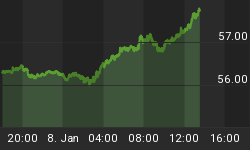In the past, President Trump has lambasted the Fed for its hawkish policies, repeatedly drumming up the fact that the central bank’s interest hike regime was contributing to an overly brawny dollar and a sluggish economy. Trump at one time even went as far as asking the White House to explore ways to weaken the currency in a bid to boost exports and spur economic growth. The dollar has been on an uptrend for much of the past decade and Trump’s presidency, something that has been blamed for the U.S.’ ballooning deficit.
It’s, therefore, quite ironic it’s president-elect Joe Biden who will actually get Trump’s wish--a structurally weaker greenback.
The dollar has spent much of 2020 on a downward spiral as investors wager that a post-pandemic global economic recovery post will continue to suck money into riskier assets and force the U.S. to increase its borrowing as it tries to fund its swelling twin deficits.
The Dollar Index (DXY), a measure that pits the USD against a basket of six major world currencies, declined to 89.600 on Wednesday, a level it last touched in April 2018 representing a 13.4% drop from its March peak as the euro surged to $1.2291, good for 10% gain for the year.
The dollar has also fallen sharply against the Chinese yuan, breaching 6.4900 for the first time since mid-2018 amid reports that Chinese banks have started shoring up purchases of the American currency in a bid to limit the drop.
The prospect of a brighter 2021 has lessened the need for the safe-haven dollar thanks to the ongoing rollout of Covid-19 vaccines. There are growing concerns though with the program falling behind schedule.
Investors are hardly complaining though: A weaker dolla r(up to an extent) is considered good for the U.S. economy for a number of reasons.
First off, it encourages the reflation trade by making most traded commodities cheaper. About 90% of the world’s trade volume is conducted in dollars. A weak dollar means there’s plenty of the currency to go around. Global monetary conditions are nice and loose when the dollar is weaker which is good for risk assets like equities and in particular emerging markets.
Second, a weaker dollar could improve the balance of trade in favor of the U.S. economy. For decades, the U.S. has been a net importer, buying far more from other countries than it sells to them.The United States is a consumer colossus with a current import deficit of $240.2 billion as of September 2020. A net importer such as the U.S. would normally favor a strong currency because it makes imports cheaper. However, most developed nations have pursued policies that favor weaker currencies ever since the 2008 financial crisis--and the U.S. is no exception.
A weaker dollar makes U.S. exports cheaper and more competitive in foreign markets. This could boost domestic manufacturing, create more jobs and boost the economy.
Given this backdrop, here are 3 reasons why the dollar is likely to remain weak for years to come.
#1. A Strong Euro
A big reason why the dollar has been on a decline is due to the euro getting stronger. The euro is the second most-commonly used currency in world trade after USD, and also the biggest component of the DXY Index with a 57.6% weight. It’s, therefore, unsurprising that the index generally mirrors the direction of EUR/USD price action.
Much of the dollar’s weakness is being caused by differences in interest rates and rate expectations in the U.S. and Eurozone.
However, there are other reasons why the European currency is becoming stronger. One of those is that it’s been winning the trust of traders after initial fears that it would not survive for long.
You can bet that the European Central Bank (ECB) is not exactly thrilled by the turn of events. However, the truth is that there’s little it can do about it. A big problem faced by the ECB is that it has to design monetary policies for a set of diverse economies. Large economies like Germany really should have stronger currencies while smaller, tourist-dependent ones like Portugal and Greece need a weaker currency. The ECB prefers EUR/USD to remain below $1.2 but the pair has crept past that level already meaning the bank’s jawboning can only achieve so much.
#2. A Dovish Fed
Unlike for much of Trump’s tenure, the Fed has lately become very dovish--and is expected to remain so for a long time.
During its latest meeting about two weeks ago, the Fed left policy unchanged and kept its cautiously optimistic outlook in place.The Fed continues to suggest it sees little chances of higher interest rates before 2024 despite Congress recently approving another large stimulus package.
Thus, U.S. interest rates and exchange rates tend to rise and fall in tandem, meaning lower rates might keep a lid on the dollar for years.
#3. More Government Stimulus
Those generous stimulus packages are dollar negative as they add to the nation’s ballooning debt. With Joe Biden promising a lot more next year, the pressure on the dollar is only going to increase.
The country has also been haemorrhaging dollars on its trade account as imports surged past pre-pandemic levels to hit a record $84.8 billion deficit on goods in November. Meanwhile, the current account deficit has widened to a 12-year high mainly due to a large shortfall in net financial transactions as Americans continue to borrow more from abroad.
In contrast, the EU is running a huge current account surplus, largely thanks to Germany, meaning there is a natural inflow to euros through trade.
The deterioration in the so-called ‘twin deficits’ is doing nothing to improve USD sentiment, which could further weaken the American currency.
By Alex Kimani for Oilprice.com
More Top Reads From Safehaven.com:

















